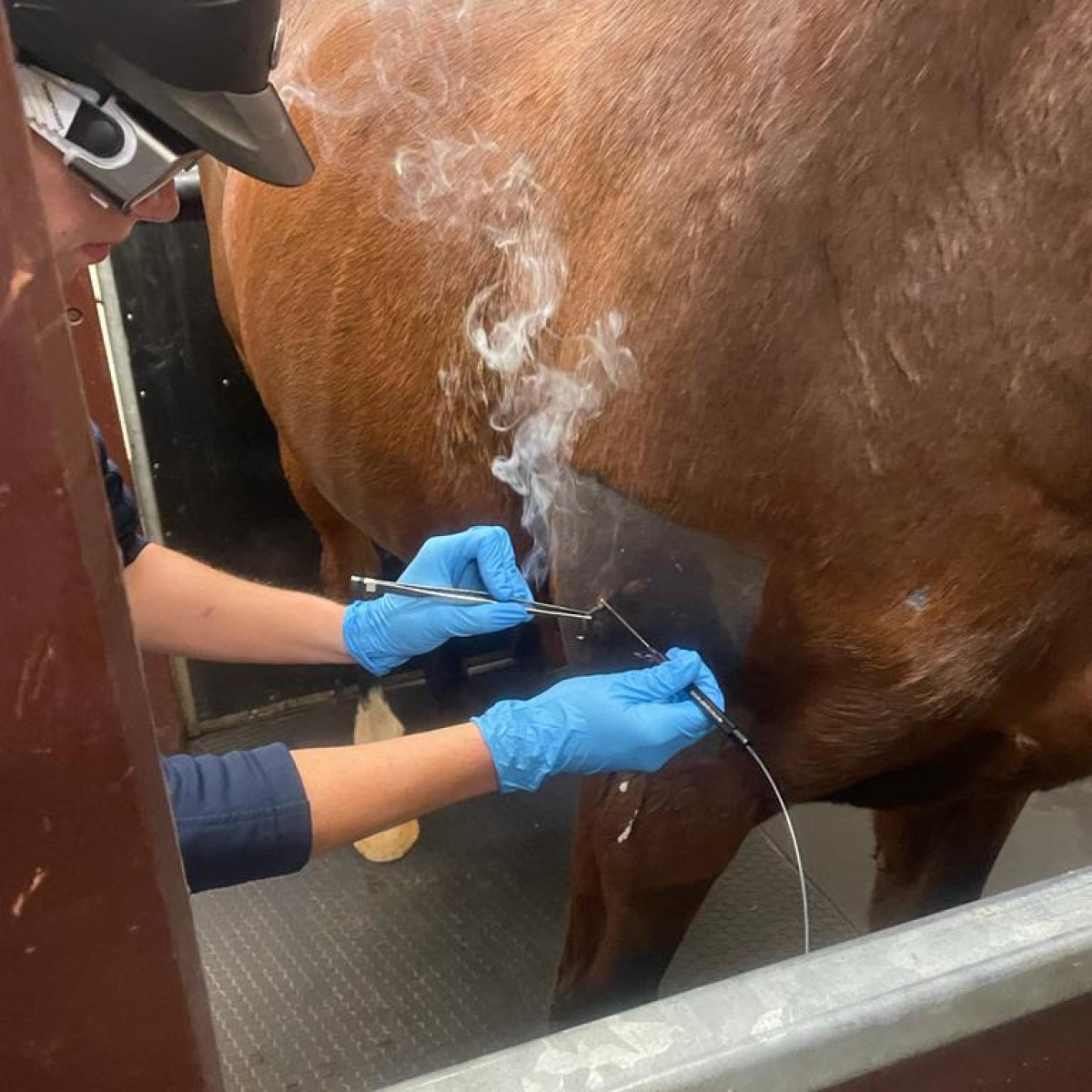The Power of Equine Therapy for Anxiety, PTSD, and Emotional Recovery
The Power of Equine Therapy for Anxiety, PTSD, and Emotional Recovery
Blog Article
Assessing the Performance of Laser Therapy in Horse Treatment for Injury Rehab
The assessment of laser therapy's effectiveness in equine injury rehabilitation pivots on several elements, including recovery time, pain mitigation, and cells regrowth. Vets often observe remarkable results with laser therapy compared to standard approaches, positioning it as a critical aspect in equine care.
Understanding Laser Treatment
Laser therapy has come to be a crucial device in veterinary medication, specifically in the treatment of equine conditions. Recognized for its non-invasive nature and effectiveness, laser therapy entails the application of certain wavelengths of light to promote tissue fixing and minimize inflammation. This healing technique is increasingly preferred for its capability to accelerate the recovery process in steeds dealing with a variety of bone and joint injuries and chronic problems.
The primary system behind laser treatment is its ability to improve mobile functions. When laser light permeates the skin, it is soaked up by mitochondria, the powerhouse of cells, which causes increased production of adenosine triphosphate (ATP) This biochemical power boost helps with mobile repair work and regeneration. Additionally, laser treatment advertises vasodilation, enhancing blood circulation and oxygen delivery to damaged tissues, thus expediting recovery.
In equine medication, laser treatment is specifically advantageous for conditions such as tendonitis, osteo arthritis, and injury recovery. The strategy is admired for its pain-relieving residential properties, permitting horses to regain wheelchair and feature a lot more quickly. Vets additionally value its marginal negative effects compared to various other treatment modalities, making it a reputable and risk-free choice for equine care.

Exactly How Laser Therapy Works

Upon absorption, these photons set off a collection of biochemical modifications, improving mitochondrial function and resulting in enhanced adenosine triphosphate (ATP) manufacturing. This increase in ATP accelerates mobile metabolic process, promoting cells repair work and regrowth. Furthermore, laser therapy regulates inflammatory reactions by influencing cytokine levels and reducing oxidative stress and anxiety, consequently minimizing pain and swelling.
One more significant facet of laser therapy is its duty in improving microcirculation. The treatment promotes vasodilation, boosting blood flow and oxygen distribution to damaged cells (Equine Therapy). This helps with the elimination of cellular particles and sustains the expansion of fibroblasts and collagen you could try these out synthesis, crucial for injury recovery
Medical Proof
The efficiency of laser treatment in equine therapy has been validated through different clinical researches, showcasing its restorative potential across an array of conditions. A research study performed by Turner et al. (2012) showed that equines treated with low-level laser therapy (LLLT) for ligament injuries displayed sped up healing contrasted to those receiving traditional treatments.
Similarly, study by Johnson and coworkers (2015) concentrated on equine muscular tissue injuries, revealing that laser therapy significantly sped up muscular tissue company website fiber regeneration and decreased muscle mass tightness. These findings were substantiated by histological evaluations showing better muscle mass cells company. Scientific assessments have actually shown that laser therapy can minimize chronic problems such as osteoarthritis. A study by Smith et al. (2018) reported that equines with osteoarthritic joints experienced remarkable discomfort alleviation and raised series of motion following a routine of laser therapy sessions.
Veterinarian Insights

Veterinarians also appreciate the convenience of laser therapy. She points out that laser treatment can be tailored to the particular requirements of each steed, guaranteeing ideal end results.
Moreover, vets value the capacity to incorporate laser treatment with various other treatment methods. This multimodal strategy can enhance general therapy efficiency, supplying a detailed remedy for equine recovery. Such recommendations from skilled experts emphasize the growing approval and application of laser treatment in equine medicine.
Practical Factors To Consider
A key element of implementing laser treatment in equine therapy involves understanding the functional factors to consider that ensure its efficacy and safety. First and primary, it is essential to select the ideal laser tool, as various kinds differ in wavelength, power, and penetration depth. Equine Therapy. Veterinarians need to be skilled in these parameters to customize treatment methods effectively to each injury type
Furthermore, the regularity and duration of laser therapy sessions need cautious preparation to make best use of therapeutic advantages while reducing any kind of possible visit here negative impacts. Consistent tracking of the equine's feedback to therapy can guide required changes in the treatment routine. Establishing a safe and controlled atmosphere throughout therapies is additionally important to avoid unexpected direct exposure to laser exhausts, which could harm both the horse and the handler.
Training and accreditation of workers providing laser treatment are vital to make sure correct strategy and to promote safety and security criteria. In addition, keeping exact documents of each session, consisting of laser settings and observed results, is important for assessing the overall effectiveness of the treatment and for making data-driven choices.
Verdict
Laser treatment has arised as an effective method in equine injury rehab, providing significant benefits in recuperation time, discomfort relief, and cells healing. For ideal results, constant monitoring and customized treatment procedures remain necessary in leveraging the full possibility of laser therapy in equine treatment.
Report this page